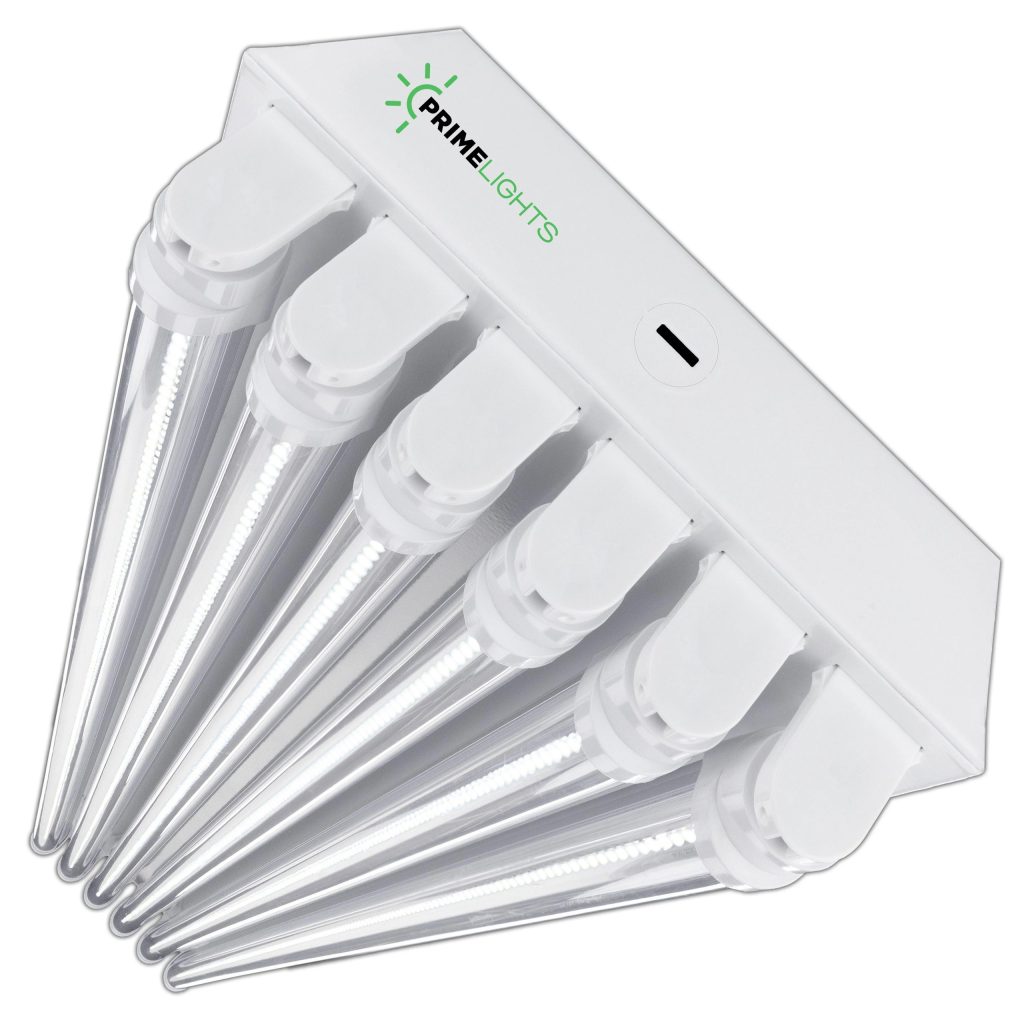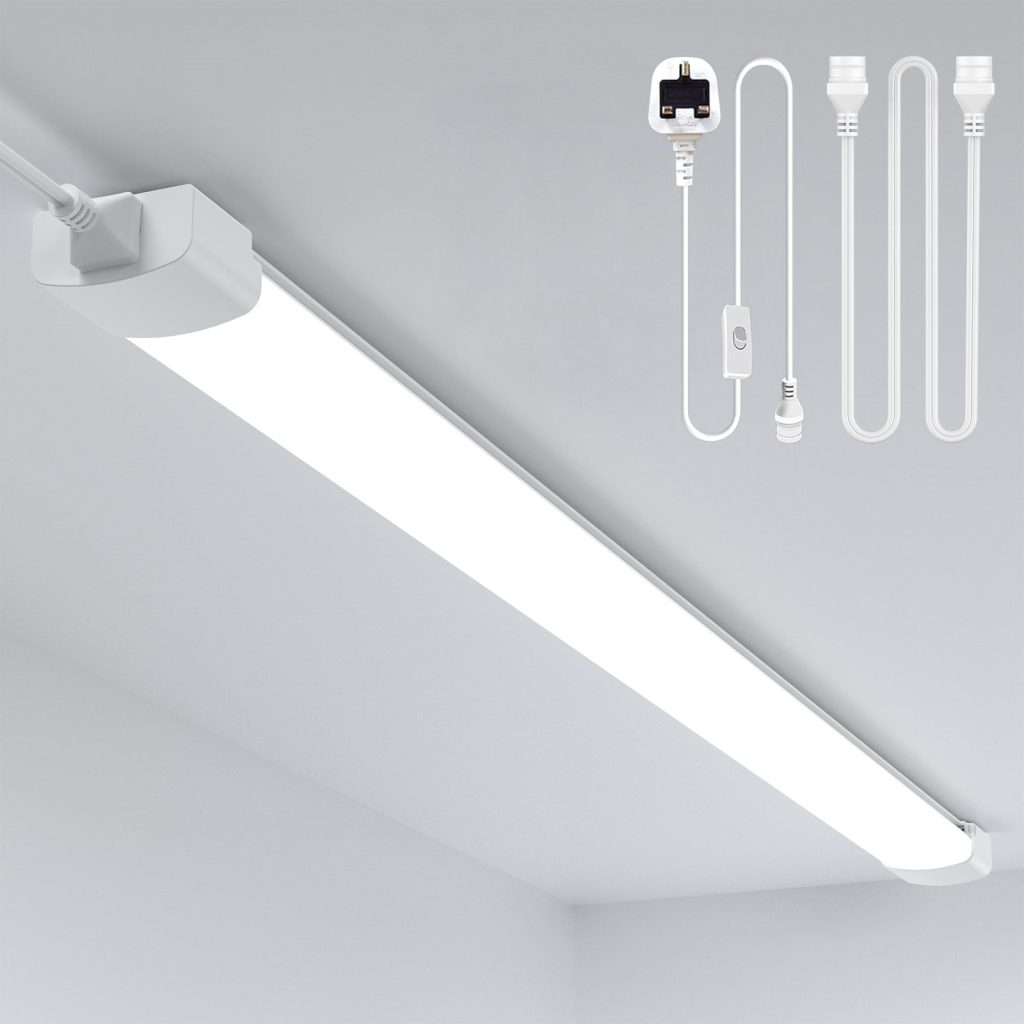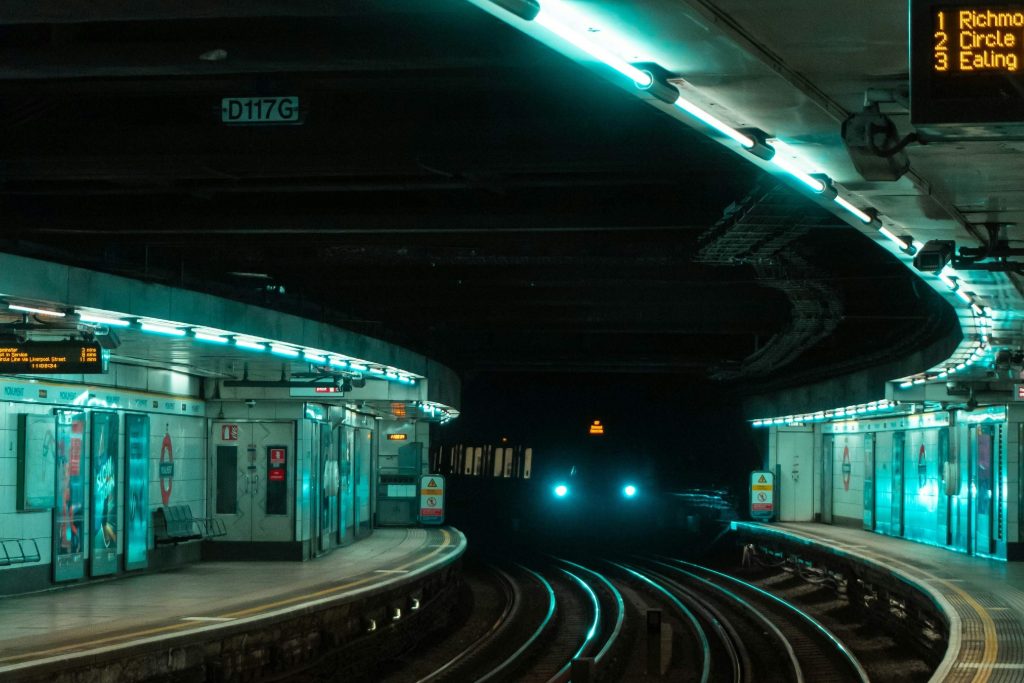An Easy Guide to Ceiling LED Tube Light Installations
Lighting Spaces with LED Tube Lights
Across the globe, LED tube lights are rapidly replacing traditional forms of lighting due to their superior performance and sustainability. A descendant of the conventional fluorescent tubes, LED tube retrofit lights have emerged as a viable lighting solution that extends beyond functional utility to incorporate elements of aesthetics and environmental responsibility.
Modern LED tube lights are distinguished by their longevity, energy efficiency, eco-friendliness, and versatile applications. They offer an impressive lifespan that significantly exceeds that of their traditional counterparts. Moreover, they consume less energy while providing equivalent or even superior illumination. This makes them not just cost-effective in the long run but also kinder to our planet.
The Imperative of Proper Installation: Setting Lights Right for Bright Nights
The myriad benefits offered by LED tube lights can only be fully realized if these modern marvels are installed correctly. Proper installation ensures optimal performance and durability, maximizes energy efficiency, and safeguards the safety of your premises.
The relevance of a meticulous installation process becomes even more pronounced if you opt for specialized versions such as LED tube grow lights or UV LED tube lights for more specific applications like promoting plant growth indoors or sanitizing indoor spaces, respectively. Conversely, improper installation could lead to decreased functionality or even premature failure.
A Procedure Prelude: Preparing for an Enlightened Journey
Installing LED tube lights may seem daunting at first glance; however, with a methodical approach and understanding of key principles, it is quite doable even for those without advanced electrical skills. Whether you’re planning on hanging a vibrant array of RGB LED tube lights in your game room or setting up soothing solar LED tube string lights in your backyard as part of your landscape lighting plan, comprehending the steps involved would make this task much simpler.
Central to this process is identifying proper locations based on light requirements and aesthetic considerations while ensuring compatibility with existing electrical infrastructure. Gathering the necessary tools, purchasing the right type of LED tube lights, and taking appropriate safety measures are also integral parts of this enlightening exercise.
Cutting Through the Darkness: Beginning your Journey with LED Tube Lights
Over the course of this post, we shall embark on a journey to comprehend how to hang LED tube lights effectively and safely on ceilings. The discourse will include insights into various types of LED tube lights, like smart LED tube lights that can be controlled via mobile applications, vintage-looking LED lights that lend an old-world charm to your space, or LED tube strip lights that enable creative lighting solutions. May this luminous journey illuminate not just our spaces but also our understanding of this revolutionary technology and its conscientious use for a brighter and more sustainable future.
Understanding LED Tube Lights
The Bright World of LED Tube Lights
LED tube lights, an integral part of modern lighting solutions, have revolutionized the way we illuminate our spaces. Not only do they provide efficient lighting, but they also add a touch of elegance to any room. These luminous tubes are much more than just light sources; they are the epitome of technological advancements in lighting.
The fundamental operating principle behind these lights involves the use of light-emitting diodes (LEDs), tiny semiconductors that emit light when current passes through them. Unlike traditional incandescent and fluorescent lights that heat filaments or gas to produce light, LEDs create illumination through a process called electroluminescence.
This enhances their efficiency and longevity while reducing heat emission. There are diverse types and sizes available in LED tube lights, catering to different needs and spaces. For instance, RGB LED tube lights allow you to change the color of your space on a whim with their vibrant hues, while UV LED tube lights find extensive use in disinfection methods due to their germicidal properties.
In addition, you can opt for smart LED tube lights for advanced control over your lighting system or choose solar LED tube lights for an eco-friendly approach. For those interested in horticulture, LED tube grow lights offer excellent plant growth assistance. Furthermore, vintage lovers can opt for LED tube vintage lights, which combine technology with nostalgia, providing a unique aesthetic appeal.
Different sizes cater to different requirements: smaller ones for task-oriented areas such as under kitchen cabinets or larger ones such as 8ft tubes suitable for commercial establishments or garages. Their versatility is further amplified by options like LED tube strip lights and LED tube string lights that offer decorative benefits along with practical lighting.
The Efficiency Quotient: LED Tube Lights
One of the striking aspects of LED tube lights is their energy efficiency. These luminous wonders consume a significantly lower amount of power when compared to traditional lighting systems, making them a sustainable choice for both residential and commercial use. A standard LED tube light can convert over 80% of its power into light, minimizing waste in the form of heat.
This high conversion rate contrasts sharply with traditional incandescent bulbs, which typically convert only 20% of the energy they consume into light – the remainder is lost as heat. Furthermore, retrofitting your existing lighting system with LED tube retrofit lights can further boost your energy savings by using existing fixtures and sockets. This way, you’re reducing current consumption and recycling old fixtures, contributing towards a greener planet.

The long lifespan of these lights is another remarkable feature that sets them apart. An average LED tube light can last up to 50,000 hours or even more – that’s at least five times longer than traditional fluorescents. This extended lifespan plays a significant role in reducing replacement costs and maintenance efforts over time.
Considering all these factors together – their energy efficiency, their long lifespan, and their ability to work within existing frameworks via retrofitting – it’s easy to see why LED tube lights have become so popular. Whether it’s for landscape lighting or any other application where quality lighting is needed, LED tubes are becoming an increasingly common choice.
Preparation: The Key to Successful Installation
Choosing the Right LED Tube Light for Your Space
Before embarking on your LED tube light installation journey, the initial and pivotal step of selection holds paramount importance. LED tube lights come in a spectacular variety, from smart LED tube lights that can be controlled through your phone to UV LED tube lights that are particularly effective for sterilization purposes.
When it comes to size, consider the dimensions of your space. A larger room may require longer LED tube lights or multiple smaller ones to ensure adequate lighting. In contrast, a compact area might only need a single unit.
Brightness is another factor that demands careful consideration. For task-focused areas like workspaces or kitchen counters, brighter options may be ideal. In contrast, living spaces might benefit from softer lighting that creates a cozy ambiance. Here, RGB LED tube lights could offer color-changing effects, adding versatility and modernity to the setting.
Color temperature refers to whether the light emits warm (yellowish), cool (whitish-blue), or neutral (white) hues. Warm colors tend to promote relaxation, while cool colors stimulate concentration – choose accordingly based on their intended use in different rooms.
Energy efficiency is an important element, especially if you’re conscious about reducing your environmental footprint and utility bills. Smart LED tube lights often offer energy-saving modes that can help with this.
Gathering Necessary Tools and Safety Equipment
Once you’ve made an informed choice about your LED tube light – whether it’s solar LED tube lights for outdoor landscape lighting or LED tube grow lights for indoor plant cultivation – the next step involves gathering all necessary tools and safety equipment required for installation.
You will need a sturdy ladder tall enough to reach your ceiling comfortably without straining yourself unduly – a fundamental requirement often overlooked until one finds themselves precariously balancing on tiptoes!
A drill machine is required for creating the holes where your mounting brackets will be attached. Ensure you have one that can handle the material of your ceiling, whether it’s drywall or something denser like concrete.
Additionally, screws compatible with both your LED tube light fixture and the ceiling material should be within reach. If you’re installing LED tube strip lights or LED tube vintage lights, check if any specific type of screw is recommended by the manufacturer.
Safety cannot be underscored enough when dealing with electrical installations. Make sure to turn off the power supply to avoid any accidental shock during installation. Using safety gloves can provide an additional layer of protection against potential sharp edges on fixtures or accidental slips with tools.
Taking time in pre-installation steps such as selecting suitable LED tube lights and ensuring all necessary tools and safety equipment are at hand goes a long way in ensuring a successful installation process.
A Step-by-Step Installation Guide
Installing the Mounting Brackets
Determining the ideal location for your LED tube lights is a critical first step in the process. The position should be strategically chosen to enhance the overall lighting and aesthetics of the space, whether you’re installing RGB LED tube lights for a vibrant ambiance or LED tube vintage lights for a softer, more nostalgic feel.
Once you’ve selected the right spot, it’s time to mark where you’ll be placing your brackets on the ceiling. Use a pencil or marker to make temporary marks that will guide your drill. Ensure that these markings are measured accurately and aligned symmetrically if you’re installing multiple LED tube strip lights, as even minor deviations can affect the final outcome.
After marking out your positions, proceed to drill holes into the ceiling for bracket installation. When doing this, ensure that you have donned protective eyewear to shield yourself from any debris that may fall during the drilling process.
With holes drilled and bracket positions secured, attach these brackets onto your ceiling using screws. It’s crucial at this stage to check and ensure that each bracket is firmly affixed; loose brackets could lead to instability of your LED tube lights later on.
Fixing the LED Tube Light Fixture
Having secured your mounting brackets firmly on the ceiling, it’s now time to place your fixture onto them. Whether it’s smart LED tube lights or solar LED tube lights you’re installing, they should rest comfortably within these brackets without any hint of strain or imbalance.

Next comes securing fixtures with screws or clips provided by manufacturers. These essential components help keep everything in place while ensuring maximum light efficiency from your chosen type of LED tube – be it RGB LED tubes for colorful lighting effects or UV LED tubes aiding in sterilization efforts.
With fixtures securely fixed into place on their mounting brackets and ready for final electrical connections, we’ve completed the basic physical installation of our LED tube grow lights or any other specific type of LED tube light you’ve chosen.
Connecting to Power Supply
Routing wires from your fixture to the power source is the next necessary step. Begin with identifying your power source – usually a junction box. Make sure your power supply is turned off during this process to prevent potential electrical accidents. Strip the ends of your wires.
It’s crucial to expose a sufficient amount of wire for secure connections, but not so much that they become a hazard or cause short circuits in your landscape lighting design or in-home lighting setup. Once stripped, use wire nuts to connect fixture wires with those from the power source.
Ensure that like-colored wires are connected together – typically, black with black (hot), white with white (neutral), and green or bare copper with green or bare (ground). After these connections are securely made and checked, you can restore the power supply and switch on your LED tube retrofit lights for an initial test before finalizing installation.
If all goes well, you should see immediate illumination from these tube lights – bathing your space in an energy-efficient glow that showcases all the benefits LED technology has to offer. Remember that installing LED tube string lights is not a one-size-fits-all guide.
Different products may come with varying instructions depending on their unique features and specifications. Always pay attention to manufacturer guidelines when installing any form of lighting – from smart LED tube lights for advanced home automation experiences to solar LED tube lights for eco-friendly outdoor lighting alternatives.
Special Considerations when Hanging LED Tube Lights on Ceiling
Scaling the Heights: Challenges in High Ceiling Installations
LED tube lights are versatile lighting solutions, and their applications range from residential areas to commercial spaces with high ceilings. However, installing these lights in high-ceilinged rooms can pose unique challenges. For one, you need specialized ladders or scaffolding to reach the ceiling safely.
The height also increases the risks involved in the installation process. Moreover, accurately measuring distances for symmetrical placement of multiple LED tube lights becomes more complex with increased height. You may need a laser level tool or a plumb line to ensure accurate alignment of your LED tube grow lights or any other type you prefer.
Also, high ceilings often imply larger room sizes, which might require brighter light sources. In such cases, opting for RGB LED tube lights or solar LED tube lights could provide an effective solution due to their higher lumens output and energy efficiency. Running electrical wires up a tall wall or across a high ceiling can be tricky, as it requires securing them properly to avoid any possible accidents.
The Material Matters: Dealing with Different Ceiling Materials
The nature of your ceiling material can significantly impact your LED tube retrofit light installation process. Drywall ceilings are common and relatively easier to work with; they allow easy drilling and don’t require heavy-duty fasteners for holding up lightweight fixtures like LED tube strip lights or smart LED tube lights.
Concrete ceilings present more of a challenge due to their hardness. You’ll need robust tools like masonry drill bits and concrete screws for installing your landscape lighting fixtures onto concrete surfaces.
Wooden ceilings fall somewhere between drywall and concrete when it comes to ease of installation. While they are harder than drywall, they’re not as unyielding as concrete; standard drill bits should work fine here.
Metallic ceilings may require self-drilling screws or pre-drilled holes using a metal drill bit. Installing LED tube vintage lights on metallic surfaces may add an aesthetic appeal to industrial-style decor.
Lighting in Sequence: Considerations for Installing Multiple Tube Lights in a Series
When planning to install multiple LED tube lights, like LED tube string lights or UV LED tube lights, there are certain considerations you must bear in mind. First, ensure that your circuit can handle the cumulative electrical load of all the integrated lights without tripping.

Consistency is key when setting up a series of lights; they should be evenly spaced and aligned well with each other. Using a measuring tape and level tool can help achieve this precision.
The type of light also plays a role. A series of RGB LED tubes might serve as an excellent option for creating ambient or mood-lighting effects due to their color-changing capabilities.
Additionally, consider the ease of maintenance when installing multiple fixtures. If one light goes out prematurely, it should be easy to replace without disrupting the entire array.
Enlighten Your Spaces: Tips for Maintenance & Troubleshooting Common Issues
Implementing proper maintenance of your LED tube lights will not only prolong their lifespan but also ensure they continue to illuminate your space efficiently. The first rule of thumb is to always ensure the lights are turned off and cool before commencing any cleaning or maintenance task.
A soft, dry cloth is usually all you need to wipe the surface of the LED tube lights free from dust or any other debris that may accumulate over time. Should it be necessary, a mild cleaning solution can be used; however, avoid using harsh chemicals, which could damage the exterior of the lights.
LED tube lights are designed for long-term usage and typically don’t require frequent replacements like traditional bulbs. However, if you notice flickering, uneven brightness levels, or complete failure to turn on, it’s likely time for some troubleshooting. Faulty wiring connections and incompatible dimmers are common culprits behind such issues with LED tube vintage lights or any other variant in this lighting family.
Investing in smart LED tube lights can offer advantages like remote troubleshooting and automated notifications when a bulb needs replacing. Additionally, they even allow you to adjust brightness levels and color temperatures remotely via a dedicated app – enhancing both convenience and energy efficiency.
On occasion, some users may experience issues with specialized types such as UV LED tube lights or RGB LED tube lights not emitting the correct color spectrum. In this case, it’s often best to consult with a professional electrician or reach out directly to the manufacturer’s support team.
If you’re using outdoor variants like solar LED tube lights for landscape lighting or LED tube string lights as festive decor on your patio, remember that while these are designed to withstand various weather conditions, minimizing exposure when extreme weather forecasts are expected can enhance longevity.
Conclusion: How to Hang LED Tube Lights on the Ceiling?
Embracing LED tube technology in your lighting solutions, whether it’s LED tube grow lights for an indoor garden or LED tube retrofit lights in your garage, is indeed an eco-friendly step towards the future. Their superior versatility, aesthetic appeal, and energy efficiency make them a clear winner over their traditional counterparts.
You now possess the knowledge to install and maintain these luminous wonders with confidence, ready to brighten up every corner of your space. Here’s to a future that is brighter, both literally and metaphorically!
You may also be interested in the following posts:
